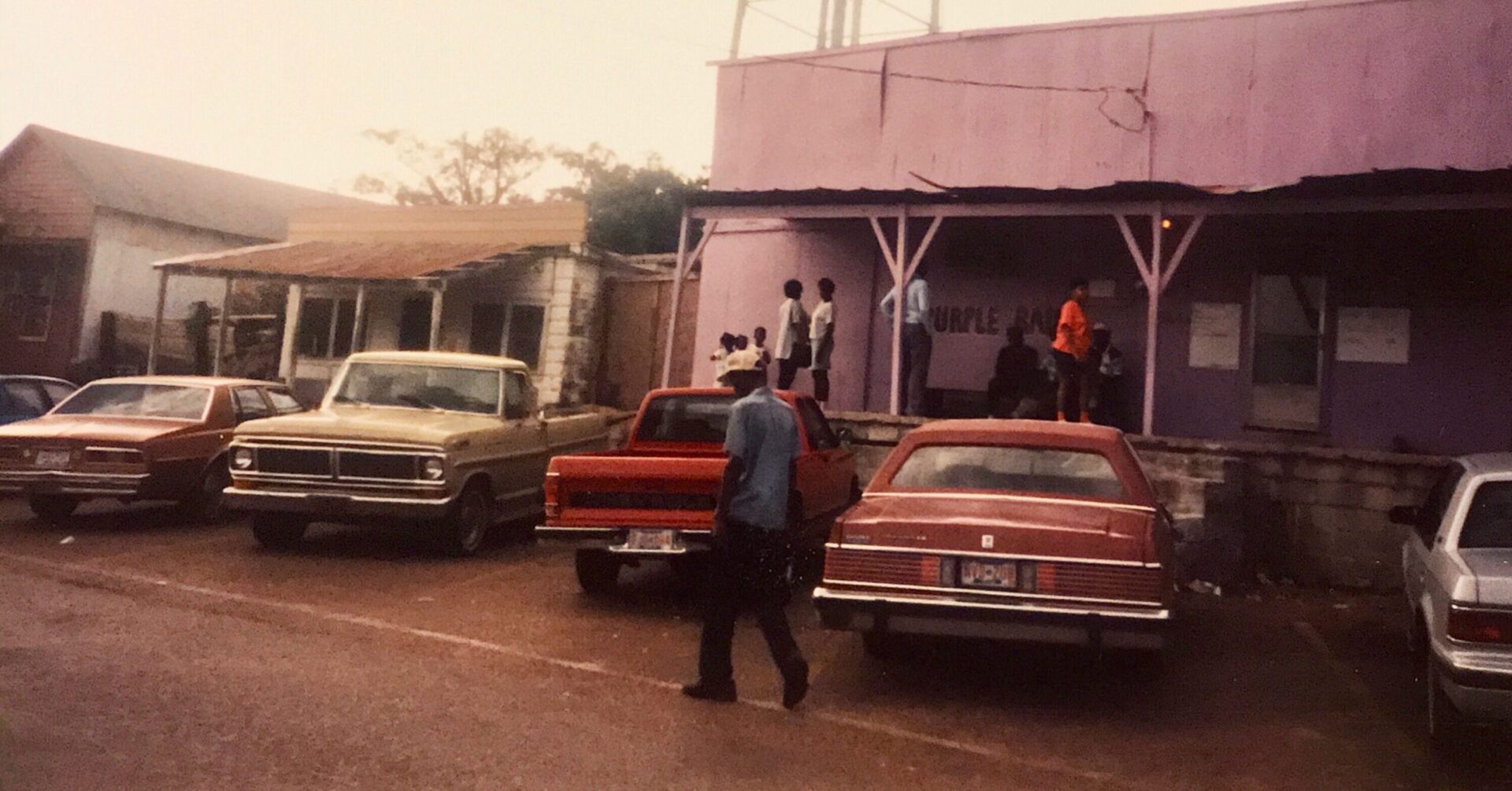








The Black Indians of New Orleans have always fascinated me. I read about them long before I had ever seen one. Their culture is ancient (perhaps as far back as the 19th century), and fairly secret, although the recording of musical albums shed some light on the otherwise mysterious subculture, and the Indians seem less shy of the cameras and spotlights these days, perhaps recognizing public awareness as a potential ally in helping to preserve the culture.
Certainly, in the old days, I would not have been able to attend an Indian practice. Such events were unpublicized, held in obscure neighborhood bars and generally closed to outsiders unless one was invited. But nowadays, some of the practices are listed on the events boards for WWOZ, Gambit or OffBeat, and one of the early arrivers for the morning’s second-line had mentioned that a practice would be going on that night at a club called Handa Wanda, so I knew that I didn’t want to be anywhere else.
The Mardi Gras Indians (really a misnomer, since the gangs of Indians exist year-round) are groups of working-class Black men who “mask Indian” and are organized into what they call “gangs” rather than “tribes.” At one time, before Hurricane Katrina, there were said to be 25 of these gangs, with names like the Wild Magnolias, the Wild Tchoupitoulas, the Creole Wild West and so on. They traditionally appeared on Mardi Gras day, and on St. Joseph’s Night, a Catholic holiday associated with working men. By the early 1970’s, a third holiday had been added called Super Sunday in March, held on different weekends for the Uptown and Downtown tribes, giving them an opportunity to show off their elaborate, homemade costumes. The tradition would seem to be ancient. Earliest references to Black men masquerading as Indians in New Orleans can be found in newspapers from the late 19th century, and through the first five decades of the 20th century, confrontations between these gangs of Indians could occasionally grow violent. Much of the violence began to subside during the 1960’s, and the emphasis shifted to beautiful, intricate costumes, and following a protocol of danced combat when gangs meet in the streets.
But Hurricane Katrina had devastated the Indian tradition, much like she devastated every other aspect of New Orleans. Prior to the storm, most Indian gangs had separate practices in their neighborhood bars, but the practice I was attending tonight was billed as a “Unified Indian Practice”, meaning a practice at which members of multiple tribes could participate, at least in part perhaps because there are fewer tribes and fewer practices these days. Like all Black Indian activities, the practice began with the singing of “My Indian Red”, a song that Indians refer to as a prayer. Its lyrics state “Indians of the nation, the whole wild creation, we won’t bow down, on that dirty ground” setting forth the bravery and pride that characterized the tradition’s earliest years. After that, there were about five or six drummers on stage, with two bass drums, congas and bongos, and to the insistent rhythm they started, the Indians in the hall began to run through their traditional chants, all of them structured in typical African call-and-response, and including many fragments of an Indian language that is rather mysterious. Such words as “handa wanda, hoo-don-day, two-way-pock-e-way, jockamo fin-na-nay” are all examples of this language that are likely familiar to New Orleans music fans through their incorporation into popular song. Just exactly what these phrases actually mean, however, is something of a mystery. Scholars have suggested links with Spanish or French words, but many of their conclusions are far-fetched, and cannot be proven anyway.
On occasions, the big chief who was presiding over the practice grew annoyed when he didn’t feel enough people were singing the words. “You should know these songs. This is the reason a lot of big chiefs don’t hold practices anymore,” he said. “The culture is dying, and we are trying to keep it alive.” But the culture didn’t seem dead on this particular night. It seemed as alive as ever. The room had been somewhat chilly before the practice, but it was downright hot now. The drummers’ faces were covered with sweat, the Indians in the middle of the room danced and jumped to the rhythm with enthusiasm, and those around the edges of the room and upstairs cheered them on. Aesthetically, it could have been a scene from the Caribbean or even from Africa, but it was actually right in the 3rd Ward of New Orleans, not a block from where our second-line had passed earlier in the afternoon. All too soon, the practice came to an end. If it hadn’t, I probably would have remained there all night.
Founded 1963 Relaunched 2019. The Postmodern South.
